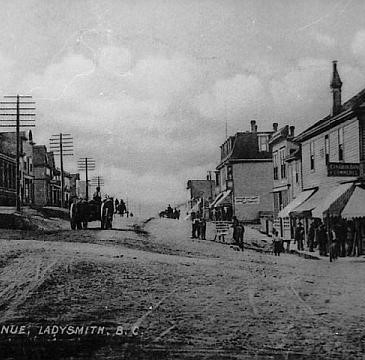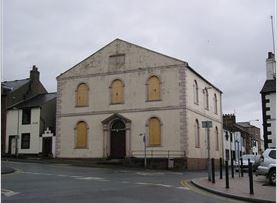Ish… Updated
Breaking News!
My Dad’s Y-DNA results are in and although our surname is Little, not a single one of his 12 matches are Littles. They are all… wait for it… Bride or McBride. (Rather similar to Bryden I feel?)
My new working theory then is that James or his father, grandfather, great grandfather etc. was born (probably illegitimately) to a Bryden (or variant) father and a mother with the surname Little.
The search begins again…
My paternal 2 times Great Grandfather James Little was an inconsiderate so and so when it came to future family historians.
He may or may not have been born in Dumfriesshire anywhere between 1806 ish and 1812 ish. He may or may not have married his “wife” (H)ellen Carruthers also in Dumfriesshire in about 1830 ish. He may or may not have bothered to christen 8 out of 9 of his children. (James son of James Little of Garwald Water ch. 25 January 1834 in Eskdalemuir being the exception.)
They farmed at Snab, Kirkpatrick-Fleming, Dumfriesshire until about 1868 before moving south to farm Greenquarries near Rosley, Cumberland. He then had the audacity to die in England in 1889 thereby depriving me of the joy of a Scottish death certificate which would (hopefully) have shown his parents details.
Disgraceful behavior!
So who was he? Who were his parents? The simple answer is “Goodness only knows?” There are a number of possible baptisms so now I must try to rule each one in or out by tracing each James Little forwards.
Are there any clues? Well yes, possibly.
Three of his daughters married at the family home of Snab. On the 1st of February 1861 Mary Little married James Chisholm after Church of Scotland banns had been read. Janet Little married George Halliday on the 3rd of December 1867 and Jane Little married David Brown on the 16 Jane 1868 in United Presbyterian services.
So were James Little’s children christened in a non-conformist church (perhaps United Presbyterian) whose records no longer exist? or not at all? Did he marry in an alternate faith church too? Was he baptised in one?
Interestingly his daughter Jane LITTLE might just have been trying to help out her descendants in their researches. She is regularly recorded with the name Bryden, Brydon or Braydon as either a middle or surname in many official documents.
- On her marriage (1868) certificate she is Jane Little Bryden and her father is James Little Bryden.
- On 3 of her children’s birth certificates she is Jane Little Brown maiden surname Brydon.
- On one she is Jane Brown, maiden surname Brydon Little.
- Another has her as Jane Brown, maiden surname Little-Brydon.
- Several of these children also refereed to her as some variant of these names on their own marriage certificates.
- When Jane died in 1904 her son Ralph registered her name as Jane Braydon Brown and her father as James Little.
- When her sister Janet died on the 12 February 1907 the same Ralph Brown (her nephew) gave her father’s name as James Bryden Little.
I am unaware of James Little using this name in any record himself so where did it come from? His mother’s maiden name? Or was he illegitimate and Brydon was his father’s name? Another piece of information seems to suggest that the latter may be nearer the mark. I have tested my father’s Y-DNA (James’ great-grandson) and all but two of his matches were with the surname Bride or McBride, non were matches with Littles! I think my own surname is wrong! This is a very recent development and I have not as yet delved into this much, but in my opinion Bride and Brydon are too similar to ignore.
There are no obvious matches for combinations of these names in the records, but I’m always looking…















 Wellington, Vancouver Island was a coal mining town which grew around the Wellington Pits. By the turn of the 20th Century the coal seam was exhausted, the owner James Dunsmuir moved his entire production to the newly sunk Extension mines and Wellington became a ghost town. Many of the workers and their attendant merchants and suppliers moved their lives and their houses to Dunsmuir’s brand new commuter town – Ladysmith. As owner of the local railroad, Dunsmuir made trains available to transport the existing Wellington buildings and gave free plots of land in Ladysmith to his miners for housing.
Wellington, Vancouver Island was a coal mining town which grew around the Wellington Pits. By the turn of the 20th Century the coal seam was exhausted, the owner James Dunsmuir moved his entire production to the newly sunk Extension mines and Wellington became a ghost town. Many of the workers and their attendant merchants and suppliers moved their lives and their houses to Dunsmuir’s brand new commuter town – Ladysmith. As owner of the local railroad, Dunsmuir made trains available to transport the existing Wellington buildings and gave free plots of land in Ladysmith to his miners for housing.







 Perhaps Elizabeth thought her maiden name was Brown, James was her step-father after all or perhaps she didn’t understand the term maiden name. Who knows what went wrong. What I do know is that before I knew who Elizabeth actually was, this little piece of dodgy information sent me off on a wild goose chase for non existent Wilson-Brown marriages. Only some major detective work led me to the real Elizabeth and that was largely down to her having been born in such an interestingly named place.
Perhaps Elizabeth thought her maiden name was Brown, James was her step-father after all or perhaps she didn’t understand the term maiden name. Who knows what went wrong. What I do know is that before I knew who Elizabeth actually was, this little piece of dodgy information sent me off on a wild goose chase for non existent Wilson-Brown marriages. Only some major detective work led me to the real Elizabeth and that was largely down to her having been born in such an interestingly named place.